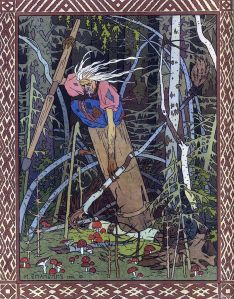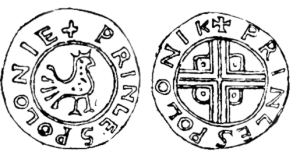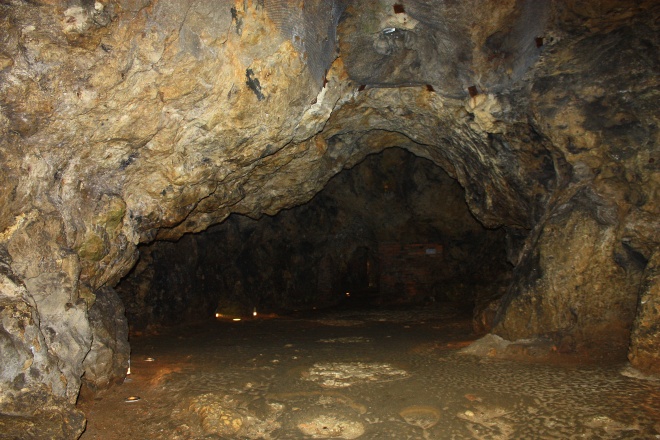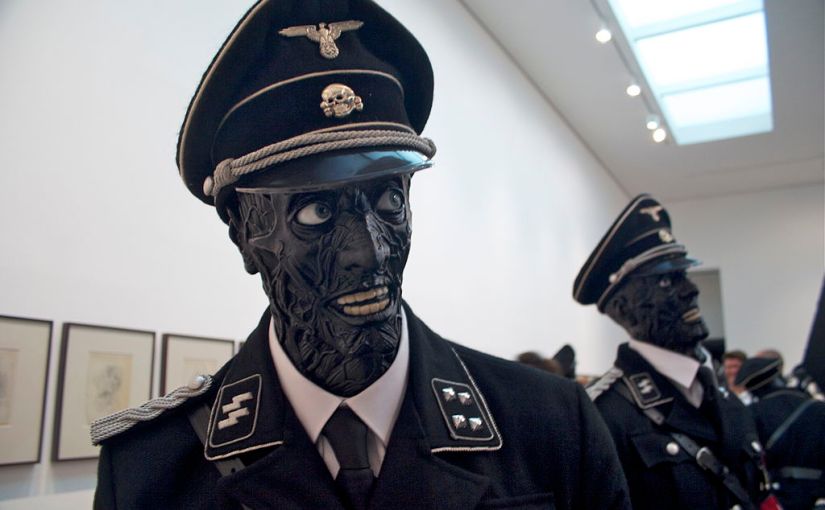We’ve all heard of vampires and werewolves. BORING! Few people realize that Polish and Slavic mythology has its own collection of horrific creatures straight out of your worst nightmares. If you dare, keep reading to discover why you should probably avoid walking deep in the Polish woods alone.
Rusałka

You’re taking a peaceful autumn stroll in the woods. As you approach a calm little creek, you observe a beautiful woman playing with her hair. Turn around. NOW! It could be a Rusałka, the ghost of an unmarried girl who drowned. Rusałki have long light-brown, red, or green hair and often wear white dresses with flowers on them. Although extremely pale, they are very beautiful and completely irresistable to men. If a man happens across one, she will seduce and try to drown him. Learn more about the Rusałka
Południca
When it comes to Polish monsters, you’re not even safe during the day. Meet the Południca, also known as the Noon Witch. She appears amidst whirling dust clouds during the hottest part of the day, carrying a scythe. Oftentimes, she will ask people very difficult questions or quiz them. It’s a high stakes game because if they answer incorrectly, the Południca gives them a haircut down to the neck. In centuries past, peasants used to blame the Południca for heatstroke.
 Leshy
Leshy
Although not the meanest monster on this list, you would still be well advised not to cross paths with a Leshy. It’s a giant woodland spirit who can shapeshift into anything. Oftentimes, Leshy leave people alone, although they are known to lead travelers astray and sometimes abduct children. Some people believe they are evil, while others just think they are moody. I wouldn’t take the chance to find out.
Strzyga
If you are ever stuck wandering the woods at night, be wary of this vampire-like creature that can transform into an owl to appear unnoticed. When one does meet a Strzyga in its true form, it may be too late, as the undead being sucks the blood of humans and sometimes even devours their insides. Strzyga are born human, but die prematurely and return to haunt the living. Polish peasants once believed that if a child was born with teeth, it would become a Strzyga.
 Baba Yaga
Baba Yaga
Common throughout Poland and other Slavic countries is the tale of Baba Yaga, an old witch who lives in the forest, waiting for someone to get lost and stumble upon her hut, which sits on chicken legs and is surrounded by a fence composed of human bones. The keyhole on her door is filled with sharp teeth. When she catches you, she will kill and eat you, adding your bones to her fence. Her favorite meal? Small children.
Wila
Wila are nymphs who inhabit the winds. They are the spirits of women who acted loosely or frivolously during their lifetimes. Now they are forced to haunt the night, leading young men astray with their seductive charm. If the wind is heavy, it means the Wila are dancing; if it’s loud, they are singing. So watch out, because those thin wispy clouds under the full moon on a chilly autumn night may actually be the vague outlines of the Wila.
 Nocnica
Nocnica
Beware of the Nocnica, or night hag, who is probably the most frightening monster on this list. Composed of shadow, the Nocnica is an evil spirit who visits people during sleep to draw their life force. Those who sleep on their back are especially vulnerable, as she will sit on their chest while slowly sucking their life out over the course of many nights. Her favorite victims are defenseless infants. In fact, she is to blame for babies having trouble sleeping at night. Their cries are due to the night hag tormenting them….
Czernobog
Czernobog is the king of all Polish and Slavic monsters. His name literally translates to “black god,” and in Slavic mythology, he was the accursed brother of Bielobog, the “white god.” The source of all evil in the world, Czernobog regularly enjoys stealing and devouring souls. He is also responsible for the most creepy Disney cartoon ever made called “Night on Bald Mountain.” Don’t be too afraid, though, as he hides like a wimp from the sunlight.












 What’s worse than regular zombies? Freaking Nazi zombies! And that’s exactly what some inhabitants claim are haunting their village of Glinka in western Poland.
What’s worse than regular zombies? Freaking Nazi zombies! And that’s exactly what some inhabitants claim are haunting their village of Glinka in western Poland.